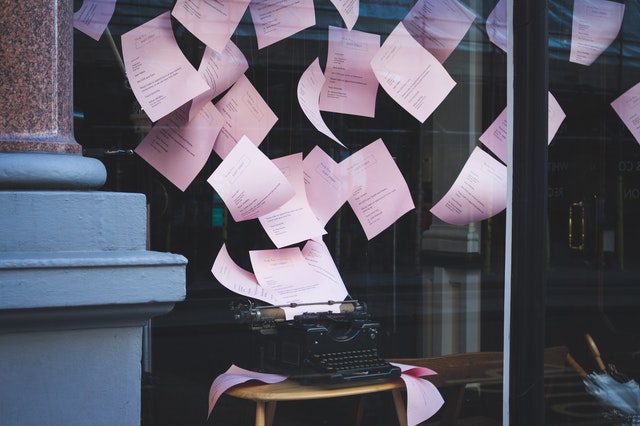The Audience Links Xchange conference offered a very good stage for our experts from the Baltic Sea Region to present the activities they are implementing to foster local participatory processes but also to network with other cultural professionals coming from all over Europe and to get in contact with good practices and constructive failures related to Audience Development. Also most of the co-partners from Europe in the project CORNERS, with Intercult as head partner, were present for internal meetings as well as taking part in the conference and works shop sessions. Both the sessions on the 22nd and on the 23rd of February were open to the public, especially to Swedish representatives of the cultural sector, meaning artists, cultural managers and policy makers.
We strongly believe in the strategic meaning of these open international kind of gatherings, since an event such as Audience Links Xchange enables cultural professionals to network with other key actors of the field but also to raise the awareness about very important topics as Audience Development among local, national and European policy makers. In particular, on Wednesday 22nd February, Jekaterina Lavrinec, Laimikis.lt, Lithuania delivered the findings from “Response and interim report Study on Audience Engagement in the Baltic Sea Region”.
Jekaterina evoked the image of Järnpojke, the sculpture of a little boy who looks at the moon by Liss Eriksson situated in Gamla Stan (Old Town of Stockholm), which is famous for being the smallest public monument of Stockholm (only 15 centimeters). Järnpojke is situated in a public space and many local people usually bring to the statue coins, candies, apples, knitted hats and scarfs. Jekaterina mentioned it as a symbol of the Baltic Audience Links approach, whose focus is about micro level social interconnection in public spaces.
Then Jekaterina presented the three principles upon which the “Study on Audience Engagement in the Baltic Sea Region” is built:
- Social practices are spatial practices, which implies that observing the space and the changes in the space, you can evaluate what kind of social relations take place in that space. Vice versa, by changing something in the space, you are able to evoke changes in the social interactions that happen there.
- Social micro practices are not stratified, namely social micro practices in public spaces are not pre-existing or pre-classified and they arise independently from social classes or groups.
- Cooperation itself is a craft to preserve, since we live in distilled modern societies where we are forgetting how to do things together.
Considering that the most frequently used word during the Audience Links Xchange conference had been “audience”, Jekaterina underlined that professionals working in the Baltic Sea Region, in the neighborhoods and in little communities, do not use the term “audience” but rather “people”, and they prefer “cooperation” and “togetherness” to “participation” or “engagement”. They ask to themselves “how do we cooperate with people?” instead of “how do we build the audience?”, being convinced that informal activation of local people is the key to cultural participation. The main challenge that these professionals working to build local ecosystems of participation have to face daily is related to sustainable development.
First, this is because NGOs are usually small and their budget is usually project based. As a consequence, they tend to scale down their activities and to implement very cheap solutions, which are not sustainable. One possible solution here is empowering local people so that they invest directly and develop themselves solutions to make the initiatives go on.
Second, sustainable development is very difficult when there is no strategic vision for cultural activities at a municipal and national level. Third, networking is a facilitator to scale up and develop sustainably, however very few actors understand the importance of building local networks in the Countries analyzed (Latvia, Lithuania, Poland). Finally, Jekaterina gave an insight about the process of Mapping that Baltic Audience Links is implementing as a tool for audience engagement in the Baltic Sea Region. The idea is to collect the profiles of organizations active in urban development and to draw the interconnections between them. In particular, the interest is on connections which are based on the common urban issues that organizations address, more than on their similar structure.
On Thursday 23rd February, we had the opportunity to learn about the experiences of some of the Baltic Sea Region professionals involved in fostering local participatory processes, coming from Latvia, Lithuania and Poland. You can read a short presentation of the participants here: http://www.intercult.se/baltic-audience-links-konferens/
Jekaterina, who moderated this session, asked the presenters to highlight which are the tools they are using when developing their initiatives.
The central questions that this session addressed were:
- How to involve people and to cooperate with them within our initiatives?
- How to consider our initiatives as a tool to bring people together and to bring some changes to the neighborhood, the city and the culturescape of our Countries?
The presentations offered a valuable insight about the Baltic Sea Region reality both to the other presenters and, especially, to the Swedish cultural professionals who joined the session, providing thorough description of the audience engagement tools currently used in the Baltic Sea Region and of their results.
You can watch the Baltic perspective – Neighborhoods session in Intercult’s Youtube channel
Written by Intercult intern, Sofia Calzavara.










